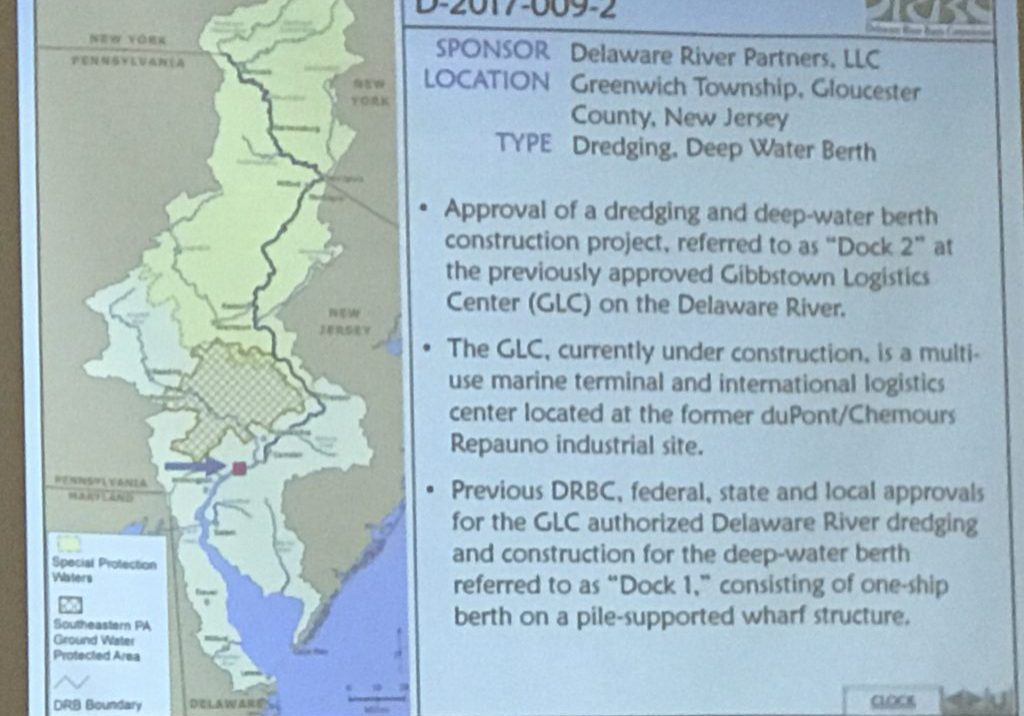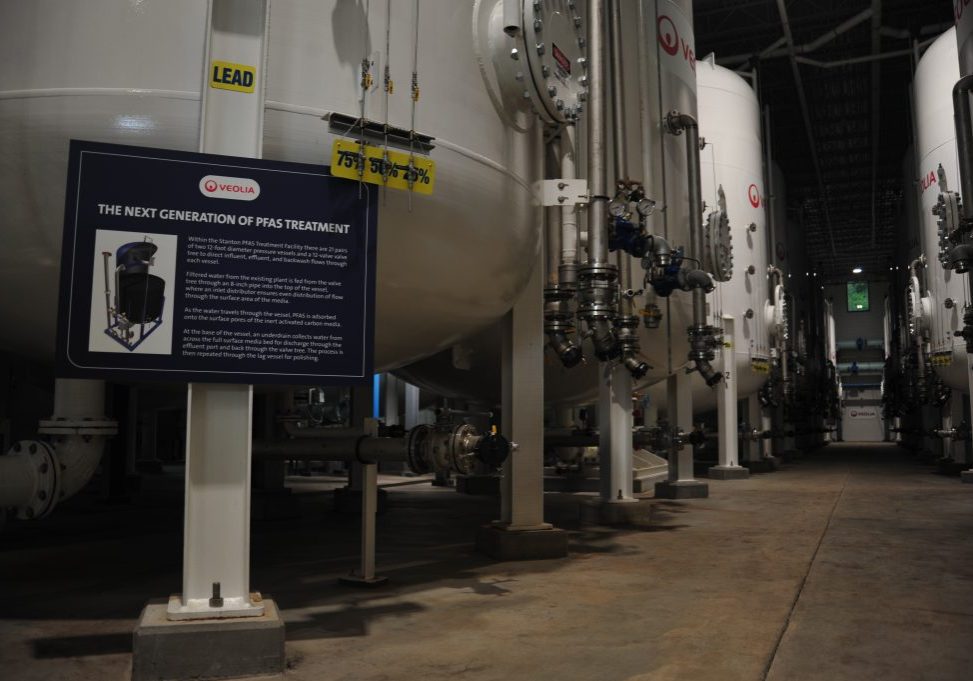
Officials weigh final decision on giant petroleum storage caverns along the Delaware
| June 6, 2025

For our complete coverage of the Wyalusing, Pa./ Gibbstown, N.J. LNG project, please click here.
This article appeared in New Jersey Spotlight.
A controversial plan to build two giant caverns to store propane and butane beneath the community of Gibbstown, N.J., on the Delaware River is going through its final public scrutiny. And it is hearing plenty from those hoping to stop it.
The state Department of Environmental Protection issued a draft permit for the Gloucester County project in April, and is now seeking public comment until June 16 before issuing a final decision on what would be New Jersey’s biggest complex of caverns for storing petroleum products.
Since it was first proposed three years ago, the project has faced opposition from environmental groups that say it would expose local people to explosive and toxic materials and should never be built in a densely populated area. They have said it would also only worsen the climate crisis by stimulating the production of fossil fuels.
“This is the wrong project in the wrong place at the wrong time,” said Tracy Carluccio, deputy director of Delaware Riverkeeper Network, at a public hearing held by the DEP in May.
“Storing liquid petroleum gas in underground caverns presents threats that are too great to allow,” she said. “The draft permit is based on assumptions, assertions and conclusions by the applicant, and rely on nothing going wrong over the many decades that these caverns would operate.”
By the numbers
The new caverns would hold 26.8 million gallons of liquefied petroleum gases, about five times as much as an existing cavern on the site that was used by its former owner, the chemical giant DuPont, to store ammonia.
That cavern is now used by the developer, Delaware River Partners, to store butane. In the future, the complex could be even larger if the company goes ahead with possible plans to build another two caverns.
The first two proposed caverns would be a series of underground spaces or galleries, between 680 and 780 feet below the surface, each some 35-40 feet high. The project would leave pillars of intact rock between 55 and 90 feet each between each gallery to support the ground above, according to the DEP permit.
The whole complex would contain 640,000 barrels of LPG. The permit covers construction but not operation of the caverns. If built, a new permit will be needed for that. The caverns are expected to take three years to build.
The permit does not authorize any construction activities that might endanger public health and safety or the environment, and the DEP reserves the right to halt construction if it determines that Delaware River Partners has violated the terms of the permit.
Unconnected to LNG project
The storage would not be connected to a proposed terminal for exporting liquefied natural gas even though that project is being pursued by the same company, Delaware River Partners, at the same Gibbstown site — now called the Gibbstown Logistics Center — as the caverns.
The company is banned by state law from storing LNG, and so it plans to load it there from trucks to ocean-going tankers. After a multiyear delay, Delaware River Partners is now seeking a three-year extension of a construction permit, which expires in June, for the proposed export terminal.
Delaware River Partners could not be reached for comment. Its parent company, New Fortress Energy, did not respond to a request for comment.

LPG often stored underground
Across the United States, liquefied petroleum gas is commonly stored in underground caverns, especially salt caverns. Their defenders say underground storage is safer than the surface option, and cite an explosion of an above-ground LPG facility in Mexico in the 1980s that killed some 500 people.
Perhaps the best-known store is the National Strategic Petroleum Reserve, in which some 700 million barrels of crude oil have been kept in salt caverns on the Gulf Coast to protect national supplies from international interruptions. In New Jersey, a smaller series of caverns sits below the Bayway refinery at Linden.
“Underground storage of LPG plays a critical role throughout the United States in maintaining the reliability of gas supplies and ensuring stable prices for consumers,” the DEP said in a description of the industry. “Millions of barrels of LPG are safely stored throughout the United States in underground caverns until it can be sold.”
Demand for propane for heating rises sharply in winter, so storage also allows operators to ensure reliable supplies year-round, officials said. Butane is used as an additive for gasoline.
But Carluccio of the Delaware Riverkeeper Network argued that the caverns would be built partly to create storage for the export market, where petroleum products generally sell for higher prices than in the United States.
“It’s a marketing scheme to develop another market for natural gas, which drilling and gas companies want in order sell more product,” she said.
To Gibbstown via truck and rail
Delaware River Partners plans to ship LPG to Gibbstown via truck and rail. Carluccio said the fuels may originate in western Pennsylvania where so-called wet gas is harvested from the Marcellus Shale, one of the world’s biggest natural gas reserves. If so, the fuel could eventually be shipped via a new pipeline like Mariner East, a troubled project that began in 2017, and now carries natural gas liquids across Pennsylvania to a terminal at Marcus Hook.
Carluccio said Gibbstown residents are already exposed to the polluted environmental legacy of the site where DuPont made munitions for about a century, and they should not be made to live with venting and flaring of gases from the proposed new facility.
Asked whether the DEP was likely to reverse its draft approval when it makes a final decision on the permit this summer, Carluccio argued that there is still time to persuade the agency to deny the project, especially if enough people protest.
“The DEP draft permit is not carved in stone, and they could still deny it or send it back to DRP for substantial revisions,” she said.
After the public comment period ends, DEP will issue a Response to Comment document that will be published in the New Jersey Register along with its final decision on the application.







